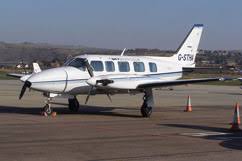
Aubrey Gladstone
Image: gladstoneconsulting.com
Florida-based business owner Aubrey W. Gladstone serves as the president of Gladstone Consulting, a problem resolution and litigation support services firm. In addition, Aubrey Gladstone is a commercial pilot for National Jet Corp. and has completed several tours of Europe via private jet.
Several widely held myths about flying in a private jet include:
– Taking a private jet is too expensive.
Many people think private jet flights are available only to the wealthy. However, a private flight can cost only a couple of hundred dollars more than a flight on a commercial plane, if you can find a good deal.
– Private jets are grounded when commercial planes are grounded.
Private jets are smaller than commercial planes, which gives private jets the ability to take off and land at small airports. The smaller size also means that private jets can handle inclement weather better than large aircraft.
– Major airlines are safer than private jets.
The number of accidents by private jets and by commercial airplanes is nearly identical. Both forms of air transportation are highly concerned with safety, and both types of planes must adhere to strict safety standards before they are allowed to fly.



